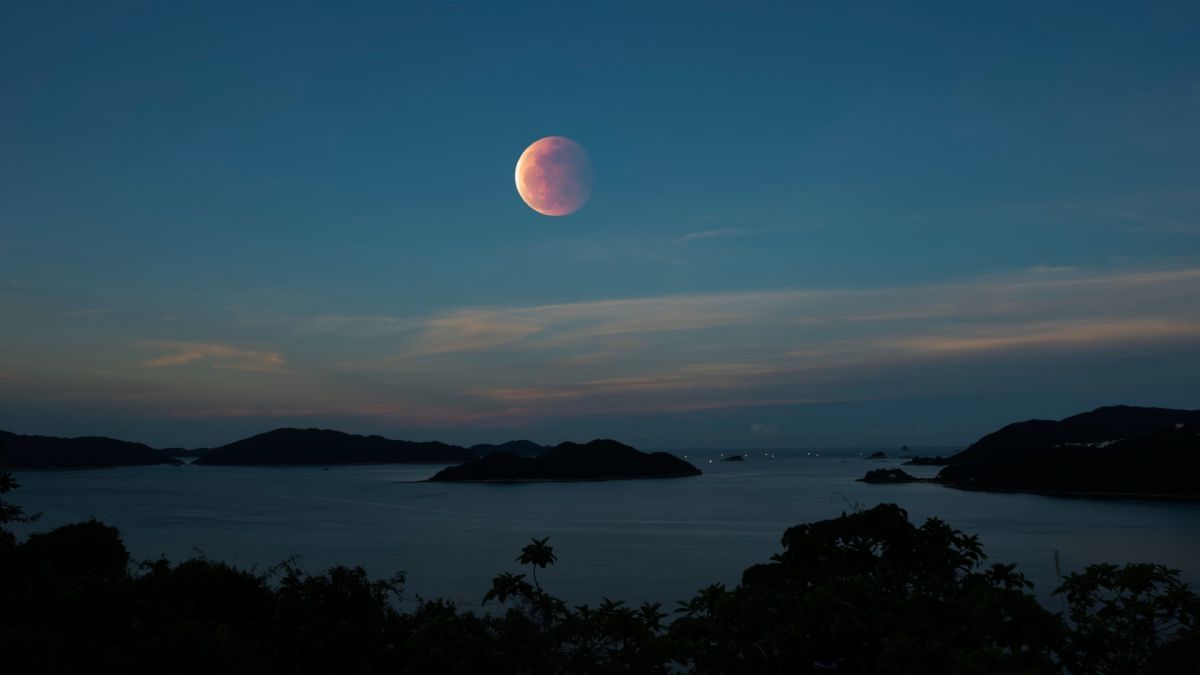What time is the lunar eclipse on May 5?
Just over two weeks after its dark silhouette crossed in front of the sun for parts of the Indian Ocean, extreme Western Australia, New Guinea and the Pacific Ocean, it is now the moon's turn to undergo an eclipse.
On May 5, the moon almost drops completely below the Earth's shadow, in the process sampling only the shadow's outermost part — called the penumbra — which is not only pale but grades to even paler outward, away from the dark, central part of the shadow, known as the umbra. As such, this event is called a penumbral lunar eclipse.
The penumbral lunar eclipse will begin at 11:13 a.m. EDT (1513 GMT) on Friday (May 5) and will peak at 1:24 p.m. EDT (1724 GMT). The eclipse will end at 3:31 p.m. EDT (1932 GMT) when the moon emerges from the Earth's shadow.
Related: Lunar eclipses 2023: When, where & how to see them
TOP TELESCOPE PICK: (Image credit: Celestron) Looking for a telescope to observe the moon or anything else in the sky? We recommend the Celestron Astro Fi 102 (opens in new tab)as the top pick in our best beginner's telescope guide.
In a penumbral eclipse, no part of the moon enters the dark umbral shadow of the Earth, so no part of the moon shows the sharp and distinct outline of the Earth's shadow. And since it will pass through the outer extremities of the Earth's shadow, this is a weak eclipse that will do little to moderate or diminish the moon's light. The penumbral shadow is usually faint and difficult to perceive unless at least two-thirds of the moon's disk is immersed within it. That portion of the moon closest to the much darker umbral shadow may exhibit a sensible darkening, but it might still not catch the eye.
Standing on the moon, an astronaut looking skyward would see the Earth appear to partially eclipse the sun.
This eclipse favors the Eastern Hemisphere, most notably an eastern slice of Africa and adjacent Madagascar, as well as much of western Asia. Conversely, the Americas will see none of it, as this event will occur during the daytime when the moon is below the horizon. The dark umbral shadow will lie to the north of the moon's path.
A map showing the worldwide visibility of the lunar eclipse on May 5, 2023. (Image credit: Dominic Ford/In-The-Sky.org)
Our timetable below, which is adjusted to reflect Greenwich Mean Time (GMT), provides the moment when the moon will start to enter the penumbral shadow, but absolutely nothing unusual will be noticed on the lunar disk at that time.
At the time of the darkest phase of the eclipse, the eclipse magnitude — that is, the percentage of the moon's diameter that is within the lighter penumbral shadow — will equal 96.4 percent.
Swipe to scroll horizontally Penumbral lunar eclipse on May 5 Eclipse event Time Moon enters penumbra 11:13 a.m. EDT/1513 GMT Faint smudge/stain appears 12:37 p.m. EDT/1637 GMT Mid-eclipse 1:22 p.m. EDT/1722 GMT Faint smudge/stain fades away 2:07 p.m. EDT/1807 GMT Moon leaves penumbra 3:31 p.m. EDT/1931 GMT
The moon will be passing through the southern part of the Earth's penumbra and its uppermost edge will miss touching the umbra by about only about 78 miles (126 km). So, perhaps for about 45 minutes or so, centered on the time of the middle of the eclipse, those who know to look, may be able to discern a vague grayish or brownish smudge or stain concentrated toward the moon's upper rim.
The eclipse will also be visible from eastern Asia, Indonesia, Australia and southern New Zealand; however, for these regions, the eclipse occurs after local midnight, so the calendar date will read Saturday (May 6). For parts of Japan and New Zealand, the moon will set while still immersed in the penumbral shadow. For the rest of the world, this event will happen during the daylight hours with the moon below the horizon, hence the eclipse will not be visible.
If that is the case for you, don't fret too much. This is, after all, a rather underwhelming event compared to more dramatic celestial spectacles like the rare hybrid solar eclipse that recently took place on April 20.
If you hope to take a look at the moon close-up during an eclipse or any other time, our guides to the best telescopes and best binoculars are a great place to start.
If you live in the path of the penumbral lunar eclipse and want to take photos of it, be sure not to miss our guide on how to photograph a lunar eclipse.
And for tips on photographing the night sky in general, check out our guide on how to photograph the moon and our rundowns on the best cameras for astrophotography and best lenses for astrophotography.
Source: Space.com


